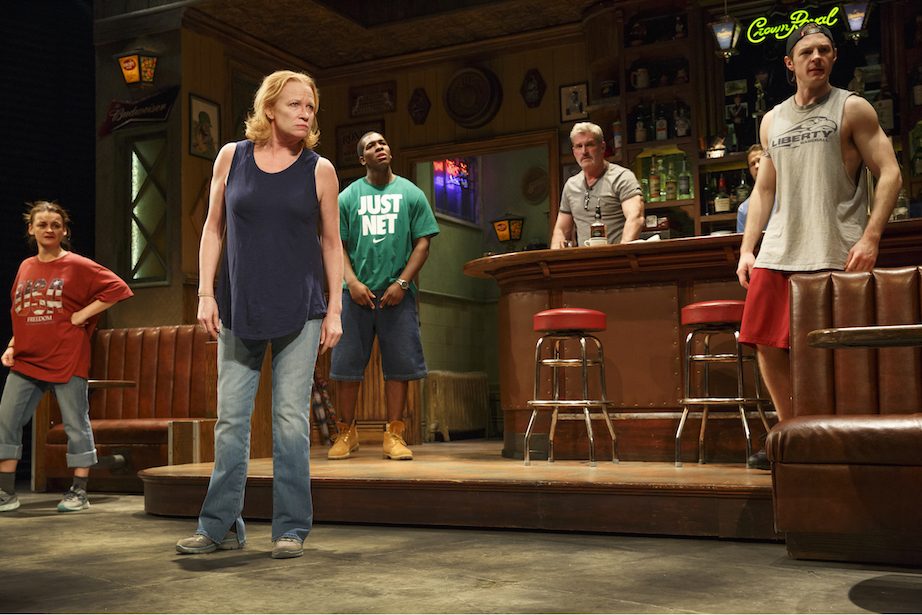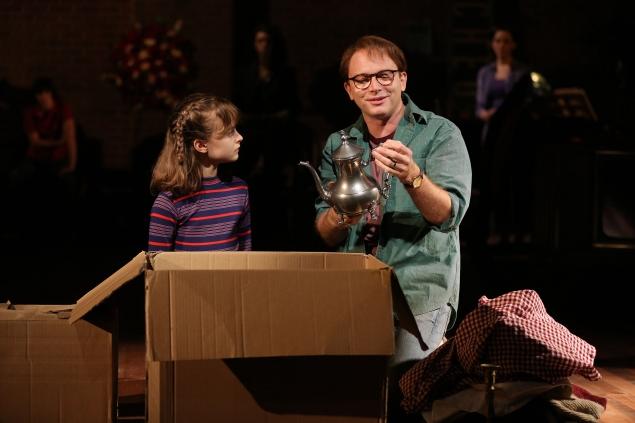By Barbara & Scott Siegel
Sweat Might Give The Public Theater the Tony Trifecta
Back in the day, The Public Theater earned its place in the theatrical mainstream when, in 1968, Hair made its way from its downtown stage to Broadway. That could’ve been considered a fluke, but when A Chorus Line made the same leap in 1975 – and then not only had (at that time) a record breaking run of 6,137 performances, it also provided the funding that kept The Public Theater awash in cash that allowed for decades of bold and challenging theater.
Those early successes, however, are beginning to pale against The Public’s recent history of birthing major Broadway productions. When you consider that first, Fun Home became a long-running hit downtown, getting one extension after another, until the show finally moved to The Circle on the Square Theater — and then it leaped over more seemingly commercial musicals to win the Tony Award before settling into a long and lucrative run. And then, on the heels of that major success, the juggernaut Hamilton followed Fun Home’s same path from The Public to Broadway, and then to the Tony Award.
And now comes Lynn Nottage’s Sweat, which opened earlier this season at The Public to rave reviews and just transferred to Broadway at the Roundabout’s Studio 54 Theater. And as we head into the long, theatrically packed run-up to the Tony cut-off date at the end of April, the smart money is on Sweat to be the third show in a row to win a Tony Award after arriving on Broadway by the way of The Public.
Though it was certainly not the playwright’s intention, on a basic level, Sweat explains why Donald Trump won the presidential election. But what the play is really about is the ultimate cost that everyone pays when people can only see what keeps them apart and not what unites them in common cause. This richly-drawn play about the death spiral of a manufacturing town, tells its story through carefully drawn characters, all of whom have strong, credible reasons for their actions. There are no villains in this piece; a play that one might call a modern American tragedy.
So, what is it about The Public that makes it the magic cauldron for downtown raves and uptown awards? Certainly, the stewardship of Oskar Eustis as the Artistic Director at The Public has an enormous amount to do with the plays that are chosen and the level of artistic support that their creators are afforded.
But there is something else afoot here. Look at these three brilliant plays. One is about the gay experience in America. One is about American diversity and the immigrant experience. And this last one is about the American working class learning a hard, tragic lesson about who the enemy really is. What do all of these shows have in common? They are all politically and socially bold!
It would be fair to say that not a single of these three shows, on paper, before they were produced, appeared to be even the slightest bit commercial, let alone Broadway transfer material – and before they were up on their feet, you would have to be on high on crack to think any of them might be potential Tony Award winners. But all three of these shows are exactly the kinds of plays that The Public produces year in and year out.
The big surprise is that these same plays, that are ideal for The Public and its audience, are also so successful uptown with the bridge and tunnel folks and with tourists from out of town. What is that telling us? Perhaps it’s telling us that quality rises to the top. And perhaps it’s also telling us that the bridge and tunnel folks and the tourists know quality when they see it, too.

























